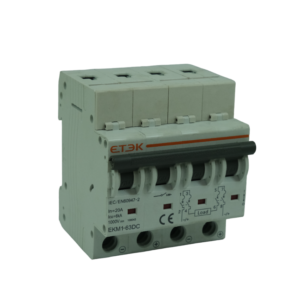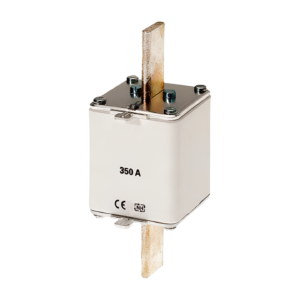NH fuses, widely used in industrial and commercial applications for electrical protection, feature a specific construction designed for reliability and ease of maintenance. Here’s a detailed breakdown of their components and functionality:
Construction of NH Fuses:
- Ceramic Casing:
- NH fuses are housed in a rectangular ceramic casing. This ceramic material provides excellent electrical insulation and mechanical strength to withstand high currents and environmental conditions.
- Cover Plate with Blade Terminals:
- Each end of the ceramic casing is sealed by a cover plate. These cover plates feature metal blade-style terminals. These terminals serve as connection points for the fuse element within the electrical circuit.
- Fuse Element:
- Inside the ceramic casing, there is a fuse element. This element is designed to melt (blow) when exposed to excessive current, thereby breaking the circuit and preventing damage to downstream electrical components. The fuse element is securely connected to the metal blade terminals on the cover plates.
- Trip Indicator:
- Most NH fuses are equipped with a trip indicator. This indicator is a visual signal, typically a colored flag or window, that changes state when the fuse element blows. For example, it might change from green (indicating normal operation) to red (indicating a blown fuse). The trip indicator provides immediate visual confirmation that the fuse needs replacement.
- Extraction Lug:
- Each cover plate includes a metal extraction lug. This lug is designed for quick removal of the fuse from its holder using an NH fuse puller tool. The extraction lug ensures safe and efficient replacement of fuses during maintenance or fault conditions.
Key Features and Applications:
- Industrial and Commercial Use: NH fuses are essential in applications where reliable overcurrent protection is critical, such as manufacturing plants, power distribution systems, and large commercial buildings.
- Safety and Maintenance: The trip indicator and extraction lug facilitate safe and easy maintenance. Electricians can quickly identify blown fuses and replace them without exposing themselves to electrical hazards.
- Durability and Reliability: The ceramic casing and robust design of NH fuses ensure long-term durability and reliable performance under challenging operating conditions.
Summary:
NH fuses are integral components for safeguarding electrical circuits against overcurrent conditions. Their construction with ceramic casings, blade terminals, trip indicators, and extraction lugs emphasizes their reliability, safety, and ease of maintenance. These features make NH fuses suitable for diverse industrial and commercial applications, where protecting equipment and ensuring continuous operation are paramount.






